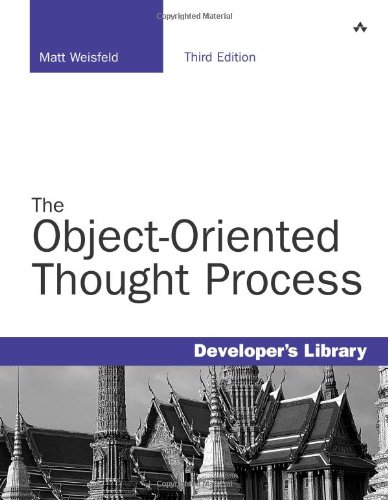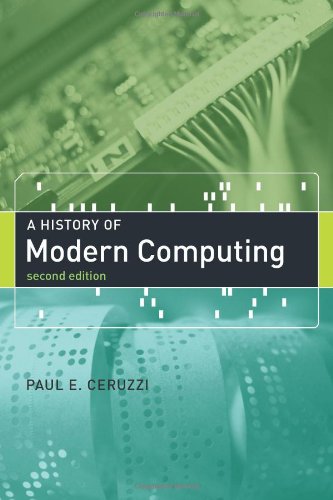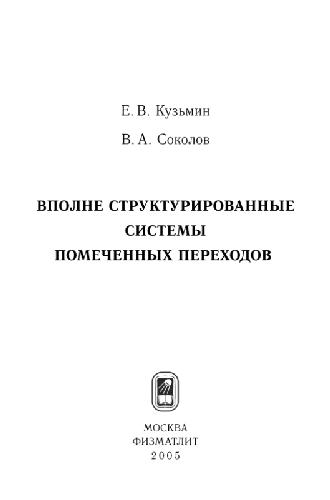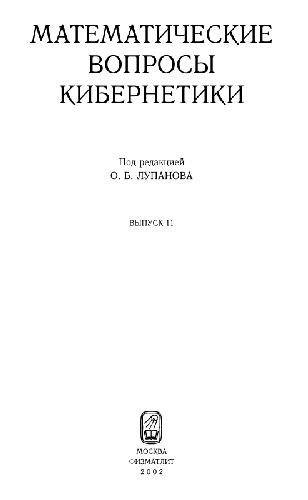Matt Weisfeld9780672330162, 0672330164
Object-oriented programming (OOP) is the foundation of modern programming languages, including C++, Java, C#, and Visual Basic .NET. By designing with objects rather than treating the code and data as separate entities, OOP allows objects to fully utilize other objects’ services as well as inherit their functionality. OOP promotes code portability and reuse, but requires a shift in thinking to be fully understood. Before jumping into the world of object-oriented programming languages, you must first master The Object-Oriented Thought Process.
Written by a developer for developers who want to make the leap to object-oriented technologies as well as managers who simply want to understand what they are managing, The Object-Oriented Thought Process provides a solution-oriented approach to object-oriented programming. Readers will learn to understand object-oriented design with inheritance or composition, object aggregation and association, and the difference between interfaces and implementations. Readers will also become more efficient and better thinkers in terms of object-oriented development.
This revised edition focuses on interoperability across various technologies, primarily using XML as the communication mechanism. A more detailed focus is placed on how business objects operate over networks, including client/server architectures and web services.
“Programmers who aim to create high quality software–as all programmers should–must learn the varied subtleties of the familiar yet not so familiar beasts called objects and classes. Doing so entails careful study of books such as Matt Weisfeld’s The Object-Oriented Thought Process.” – Bill McCarty, author of Java Distributed Objects, and Object-Oriented Design in Java.
Matt Weisfeld is an associate professor in business and technology at Cuyahoga Community College in Cleveland, Ohio. He has more than 20 years of experience as a professional software developer, project manager, and corporate trainer using C++, Smalltalk, .NET, and Java. He holds a BS in systems analysis, an MS in computer science, and an MBA in project management. Weisfeld has published many articles in major computer trade magazines and professional journals.
Table of contents :
The Object-Oriented Thought Process, Third Edition……Page 1
Table of Contents……Page 7
Introduction……Page 18
1 Introduction to Object-Oriented Concepts……Page 22
Procedural Versus OO Programming……Page 23
Procedural Programming……Page 26
Object Data……Page 27
Object Behaviors……Page 28
What Exactly Is a Class?……Page 31
Classes Are Object Templates……Page 32
Messages……Page 34
Using UML to Model a Class Diagram……Page 35
Interfaces……Page 36
A Real-World Example of the Interface/Implementation Paradigm……Page 37
A Model of the Interface/Implementation Paradigm……Page 38
Inheritance……Page 39
Abstraction……Page 40
Polymorphism……Page 42
Composition……Page 45
Conclusion……Page 46
Example Code Used in This Chapter……Page 47
2 How to Think in Terms of Objects……Page 54
Knowing the Difference Between the Interface and the Implementation……Page 55
The Implementation……Page 57
An Interface/Implementation Example……Page 58
Using Abstract Thinking When Designing Interfaces……Page 62
Giving the User the Minimal Interface Possible……Page 64
Environmental Constraints……Page 65
Identifying the Public Interfaces……Page 66
Conclusion……Page 67
References……Page 68
Constructors……Page 70
The Default Constructor……Page 71
Using Multiple Constructors……Page 72
The Design of Constructors……Page 76
Checking for Problems and Aborting the Application……Page 77
Throwing an Exception……Page 78
The Concept of Scope……Page 80
Local Attributes……Page 81
Object Attributes……Page 82
Class Attributes……Page 84
Operator Overloading……Page 85
Multiple Inheritance……Page 86
Object Operations……Page 87
References……Page 88
Example Code Used in This Chapter……Page 89
The Name of the Class……Page 92
Attributes……Page 94
Constructors……Page 96
Accessors……Page 97
Private Implementation Methods……Page 100
Example Code Used in This Chapter……Page 101
Modeling Real World Systems……Page 104
The Minimum Public Interface……Page 105
Designing Robust Constructors (and Perhaps Destructors)……Page 106
Designing Error Handling into a Class……Page 107
Documenting a Class and Using Comments……Page 108
Making Names Descriptive……Page 109
Providing a Way to Copy and Compare Objects……Page 110
Keeping the Scope as Small as Possible……Page 111
A Class Should Be Responsible for Itself……Page 112
Designing with Maintainability in Mind……Page 113
Testing the Interface……Page 114
Using Object Persistence……Page 116
Conclusion……Page 117
Example Code Used in This Chapter……Page 118
Design Guidelines……Page 120
Gathering the Requirements……Page 124
Determining the Responsibilities of Each Class……Page 125
Case Study: A Blackjack Example……Page 126
Using CRC Cards……Page 128
Identifying the Blackjack Classes……Page 129
Identifying the Classes’ Responsibilities……Page 132
UML Use-Cases: Identifying the Collaborations……Page 137
First Pass at CRC Cards……Page 141
UML Class Diagrams: The Object Model……Page 143
Conclusion……Page 144
References……Page 145
Reusing Objects……Page 146
Inheritance……Page 147
Generalization and Specialization……Page 150
Design Decisions……Page 151
Composition……Page 152
Representing Composition with UML……Page 153
Why Encapsulation Is Fundamental to OO……Page 155
How Inheritance Weakens Encapsulation……Page 156
Object Responsibility……Page 158
Conclusion……Page 162
Example Code Used in This Chapter……Page 163
Code: To Reuse or Not to Reuse?……Page 168
What Is a Framework?……Page 169
What Is a Contract?……Page 170
Abstract Classes……Page 171
Interfaces……Page 174
Tying It All Together……Page 176
The Compiler Proof……Page 178
Making a Contract……Page 179
An E-Business Problem……Page 182
The Non-Reuse Approach……Page 183
The UML Object Model……Page 185
Example Code Used in This Chapter……Page 190
Composition Relationships……Page 196
Building in Phases……Page 198
Aggregations……Page 200
Associations……Page 201
Using Associations and Aggregations Together……Page 202
Cardinality……Page 203
Multiple Object Associations……Page 206
Optional Associations……Page 207
Tying It All Together: An Example……Page 208
References……Page 209
What Is UML?……Page 210
The Structure of a Class Diagram……Page 211
Attributes……Page 213
Access Designations……Page 214
Inheritance……Page 215
Interfaces……Page 217
Associations……Page 218
Cardinality……Page 221
References……Page 222
Portable Data……Page 224
XML Versus HTML……Page 226
XML and Object-Oriented Languages……Page 227
Sharing Data Between Two Companies……Page 228
Validating the Document with the Document Type Definition (DTD)……Page 229
Integrating the DTD into the XML Document……Page 230
Using Cascading Style Sheets……Page 237
References……Page 240
Persistent Objects Basics……Page 242
Serializing a File……Page 244
Implementation and Interface Revisited……Page 246
Using XML in the Serialization Process……Page 248
Writing to a Relational Database……Page 251
Accessing a Relational Database……Page 253
Making the Connection……Page 255
The SQL Statements……Page 256
Example Code Used in This Chapter……Page 259
Evolution of Distributed Computing……Page 264
Object-Based Scripting Languages……Page 265
A JavaScript Validation Example……Page 267
Objects in a Web Page……Page 270
JavaScript Objects……Page 271
Web Page Controls……Page 272
Movie Players……Page 274
Distributed Objects and the Enterprise……Page 275
The Common Object Request Broker Architecture (CORBA)……Page 276
Web Services Definition……Page 280
Invoice.cs……Page 284
Invoice.vb……Page 285
References……Page 287
Client/Server Approaches……Page 288
Serialized Object Code……Page 289
Client Code……Page 290
Server Code……Page 292
Running the Proprietary Client/Server Example……Page 293
Object Definition Code……Page 295
Client Code……Page 297
Server Code……Page 298
Conclusion……Page 300
Example Code Used in This Chapter……Page 301
15 Design Patterns……Page 304
Why Design Patterns?……Page 305
Smalltalk’s Model/View/Controller……Page 306
Types of Design Patterns……Page 307
Creational Patterns……Page 308
Structural Patterns……Page 312
Behavioral Patterns……Page 315
Antipatterns……Page 316
References……Page 317
Example Code Used in This Chapter……Page 318
A……Page 326
B……Page 327
C……Page 328
D……Page 333
F……Page 335
I……Page 336
J……Page 337
M……Page 338
N……Page 339
O……Page 340
P-Q……Page 343
S……Page 344
U……Page 346
X-Y-Z……Page 347







Reviews
There are no reviews yet.